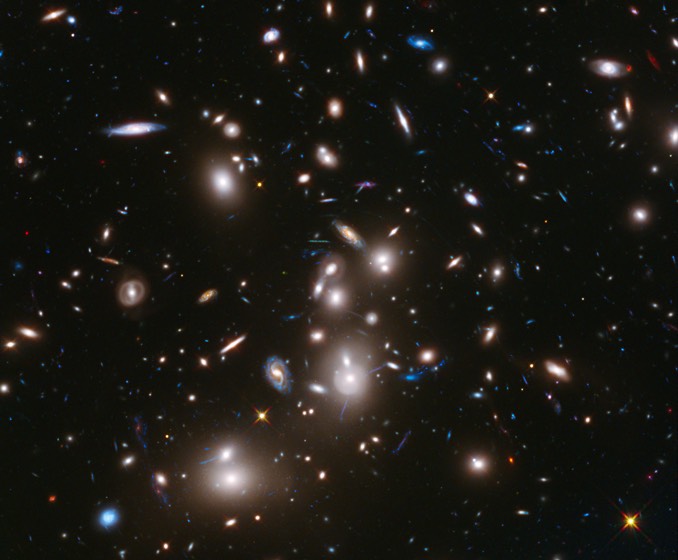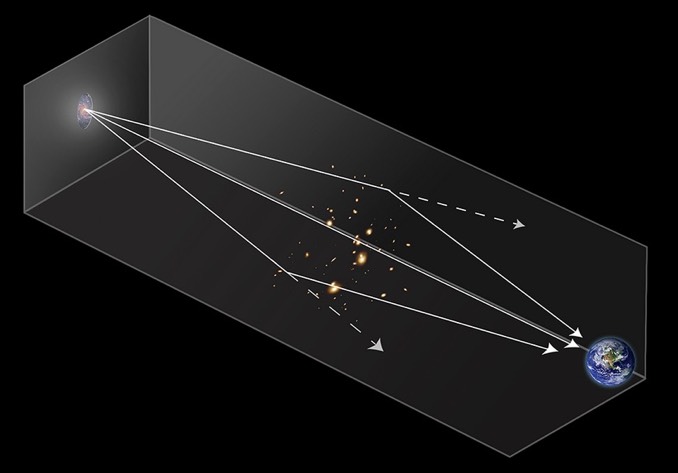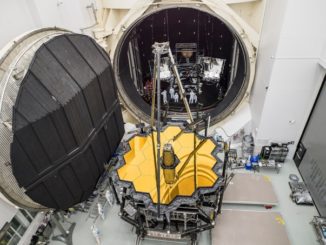
Using NASA’s James Webb Space Telescope, gravitational lensing and a bit of luck, astronauts say they have at least a chance to directly observe light from one of the first stars born in the wake of the big bang birth of the universe nearly 14 billion years ago.
Current models indicate the first generation of stars “turned on” 200 to 400 million years after the big bang. Such stars likely were massive and thus short lived, rapidly consuming their nuclear fuel before exploding and helping seed the early universe with heavier elements.
Detecting light from the first galaxies is well within reach of the James Webb, scheduled for launch in 2020, but seeing individual stars across such a vast gulf of space and time would not normally be remotely possible, even for an instrument with Webb’s capabilities.
But if the light from a first-generation star just happened to pass through a large galaxy cluster with just the right alignment, the cluster’s collective gravity could effectively amplify the starlight enough to bring it within range of the James Webb.

Typically, gravitational lensing can magnify light from a background object by a factor of 10 to 20. But if the alignment is virtually perfect, the light from a background first-generation star could be boosted 10,000 times or more, according to a paper in the Astrophysical Journal Supplement.
“Looking for the first stars and black holes has long been a goal of astronomy,” said said Rogier Windhorst of Arizona State University. “They will tell us about the actual properties of the very early universe, things we’ve only modelled on our computers until now.”
By monitoring several galaxy clusters a few times a year over the space telescope’s lifetime, the odds are it eventually will detect a first-generation candidate or the light from material falling into an early black hole. Black holes, in fact, may be easier to find because they could last longer depending on their environment.
“We just have to get lucky and observe these clusters long enough,” said Windhorst. “The astronomical community would need to continue to monitor these clusters during Webb’s lifetime.”



